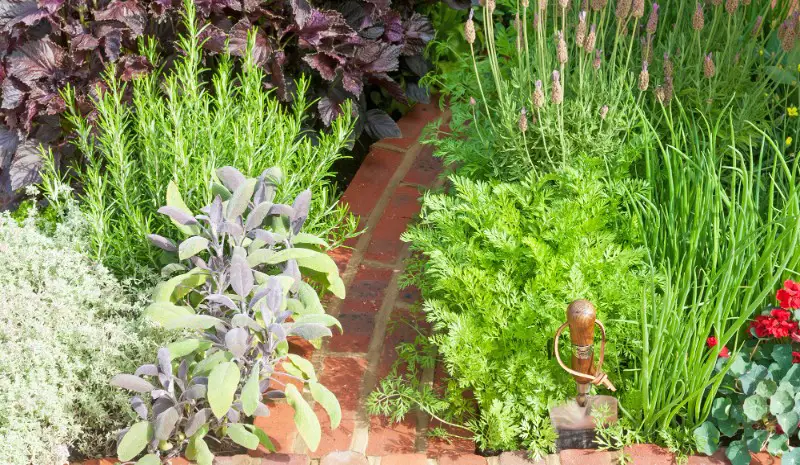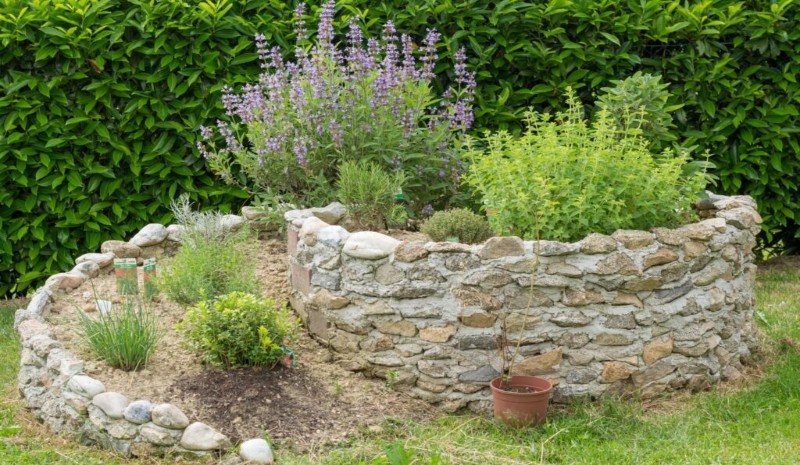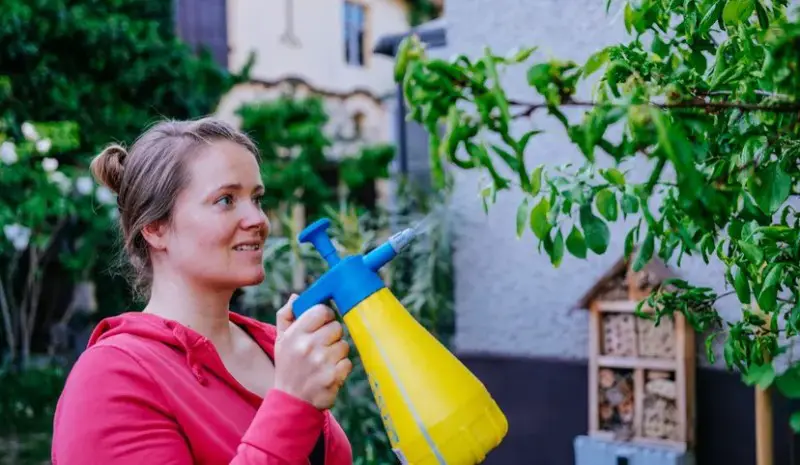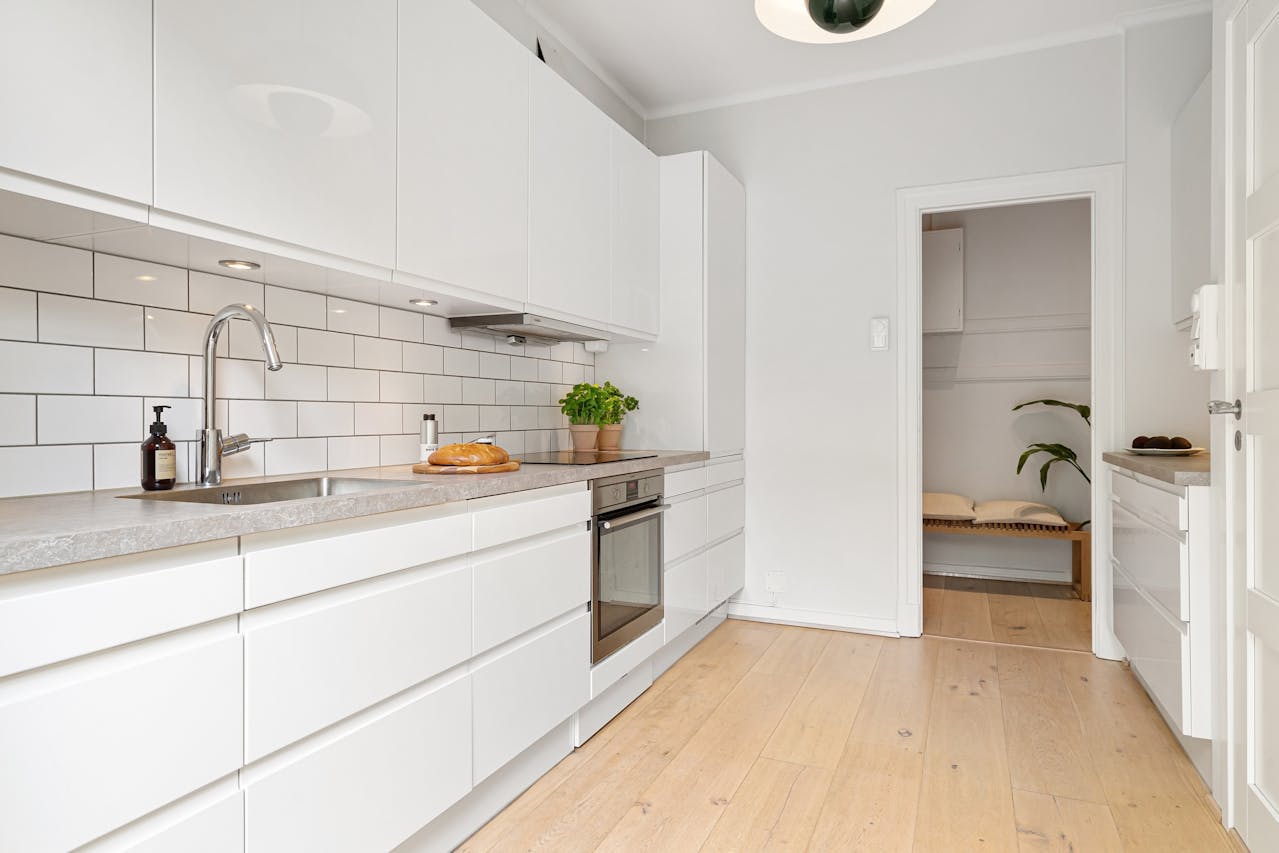Herbs are versatile plants that add flavor and aroma to many dishes. Growing your own herb garden is a satisfying way to ensure you have a ready supply of these fragrant plants. However, before you start planting, it is essential to understand how much sunlight your herbs need to thrive.
This guide will provide you with everything you need to know about lighting requirements for different herbs. By the end of this article, you’ll be well-equipped to create your own thriving herb garden and enjoy all the benefits that come with it.
Understanding Your Herb’s Sunlight Needs
Understanding your specific herb’s sunlight needs is key to growing a thriving herb garden. Some herbs require full sun, while others will do well in partial shade. Here is a breakdown of the sunlight needs for different categories of herbs:
Full Sun Herbs:
Full-sun herbs require a minimum of 6 hours of direct sunlight per day. These herbs thrive in bright and hot conditions, making them ideal for gardens in warmer climates. Full sun herbs include:
- Basil
- Thyme
- Rosemary
- Sage
- Oregano
Partial Sun Herbs:
Partial sun herbs need less than 6 hours of direct sunlight per day. These herbs prefer some shade during the hottest part of the day or afternoon. Partial sun herbs include:
- Cilantro
- Chives
- Mint
- Parsley
- Dill
Shade-Loving Herbs:
Shade-loving herbs do not require direct sunlight and are best suited to growing in shaded areas. These herbs thrive in cooler temperatures and moist soil. Shade-loving herbs include:
- Lemon balm
- Lovage
- Chervil
- Tarragon
By understanding the sunlight requirements of your herbs, you can make informed decisions about where to place them in your garden and how to care for them.
Full Sun Herbs

Full-sun herbs require the most sunlight, typically six or more hours of direct sunlight per day. These herbs include popular varieties such as basil, oregano, thyme, and rosemary. The intense sunlight helps these herbs produce the oils and flavors that make them so popular in the kitchen. Without adequate sunlight, the leaves can become less flavorful and may even begin to wilt. To ensure that your full-sun herbs thrive, choose a location that receives plenty of direct sunlight and avoid planting them in areas that are shaded for any part of the day. Make sure to provide regular watering and fertilization to help these herbs reach their full potential.
Looking to grow tomatoes in your garden? We’ve got you covered! Check out our latest article on ‘7 Best Growbags for Tomatoes‘ for expert recommendations and insights. Discover the top-notch grow bags that will enhance the growth and yield of your tomato plants. Don’t miss out on this valuable resource!
Partial Sun Herbs
Partial sun herbs are plants that require around four to six hours of sunlight each day. These plants will grow well in areas that receive morning sun and afternoon shade or dappled sunlight throughout the day. Most herbs that fall into this category are native to woodland environments, where they are naturally shaded by trees.
Partial sun herbs include parsley, chervil, cilantro, and tarragon. To ensure the growth and success of partial sun herbs, it’s crucial to position them in the right location. Ideally, the spot you choose should allow for gentle morning sun and shade throughout the afternoon. You can achieve this by planting them near trees or near structures that provide shade in the afternoon.
If planting in pots, you can also move them to a sheltered spot when the midday sun is at its strongest. It’s worth noting that partial sun herbs can be more tolerant of shade than full-sun herbs, but it’s still important that they receive a minimum of four hours of sunlight each day. Lack of sufficient sunlight can lead to leggy growth and fewer leaves, which will reduce the quality of the herb. If your partial sun herbs are struggling, try moving them to a sunnier spot or consider supplementing natural light with artificial grow lights.
- Partial sun herbs require around 4-6 hours of sunlight each day
- Position in a location that allows for morning sun and afternoon shade
- Plants that fall into this category are native to woodland environments
- Partial sun herbs include parsley, chervil, cilantro, and tarragon
- If struggling to receive enough sunlight, consider supplementing with grow lights
Shade-Loving Herbs
Shade-loving herbs are those that thrive in areas where there is limited direct sunlight. These herbs are perfect for planting in locations where the sun is blocked by buildings, trees, or other structures. Below are some of the most popular shade-loving herbs.
- Mint: A refreshing herb with a pleasantly cool taste. Grows best in partial shade and moist soil.
- Chives: A versatile herb with a mild onion flavor. Grows well in partial shade and well-drained soil.
- Parsley: A classic herb with a bright, fresh flavor. Thrives in partial shade and rich, moist soil.
- Cilantro: A zesty herb commonly used in Mexican and Asian cuisine. Grows well in partial shade and well-drained soil.
Shade-loving herbs tend to be more delicate compared to full-sun herbs and are also more prone to disease and insect damage. Careful attention to soil moisture levels is crucial, as these herbs require consistently moist soil to thrive. Additionally, it’s important to keep shade-loving herbs away from any direct sun exposure, which can cause them to wilt and die. By following these steps, you can have a thriving herb garden even in areas that receive limited direct sunlight.
Growing Your Herb Garden

Now that you understand the sunlight requirements of different herbs, it’s time to start growing your herb garden. By following these steps, you’ll be on your way to growing a thriving garden in no time. Choose a location for your herb garden that receives the appropriate amount of sunlight for the herbs you want to grow.
Most full-sun herbs need at least 6-8 hours of sunlight per day. Partial sun herbs need around 4-6 hours of sunlight per day, while shade-loving herbs need only 2-4 hours of sunlight per day. It’s also essential to choose a location with good drainage and protection from strong winds.
Herbs grow best in well-draining soil with a neutral pH level between 6.0 – 7.0. If your soil is too heavy, add organic matter like compost or leaf mold to improve drainage. If your soil is too acidic, add lime to raise the pH level. Test your soil before planting to determine its texture and pH level. Herbs need consistent moisture to thrive, but over-watering can lead to root rot.
Water your herbs deeply, but allow the soil to dry out slightly between watering. Be sure not to let your herbs dry out completely or wilt. Herbs don’t require a lot of fertilization, but providing them with nutrients can help them grow stronger and produce more flavorful leaves. Use a balanced fertilizer with equal parts nitrogen, phosphorus, and potassium, or add compost to your soil for a natural source of nutrients.
Pests like aphids, spider mites, and whiteflies can damage your herbs and reduce your yield. Keep an eye out for any signs of pest infestation and treat them accordingly. You can use insecticidal soap, neem oil, or herbicides to protect your garden. By following these steps, you’ll be well on your way to growing a thriving herb garden that produces flavorful and aromatic herbs.
Choosing the Best Location
Choosing the best location for your herb garden is crucial to ensure optimal growth and yields.
| Choosing the Best Location for Your Herb Garden |
|---|
| – Consider factors such as sunlight, soil quality, and drainage |
| – Choose a location that receives at least 6 hours of direct sunlight per day |
| – Ensure the soil has good drainage to prevent water-logging |
| – Consider using raised garden beds or containers if soil conditions are not ideal |
| – Choose a location that’s easily accessible for watering and care-taking |
| – Consider environmental factors that could impact your garden, such as wind or exposure to harsh weather conditions |
Preparing Your Soil
Preparing your soil is an essential step in creating a thriving herb garden. Here are some things to keep in mind when preparing your soil:
- Test your soil. Testing your soil can help you understand its nutrient content and pH level, which is essential for planting the right herbs. You can purchase soil test kits from garden supply stores or local cooperative extension offices.
- Amend your soil. Depending on your soil test results, you may need to amend your soil to make it more conducive for herb growth. Adding compost is an easy way to add organic matter and nutrients to your soil. You can also add specific fertilizers or adjust the pH level with lime or sulfur.
- Loosen the soil. Loose soil allows for better root growth and water absorption. Use a garden fork or tiller to break up compacted soil, and remove any rocks or debris before planting.
- Consider raised beds. If your soil is poor quality or you have drainage issues in your garden, raised beds can be a useful option. Raised beds provide additional drainage and allow you to fill them with high-quality soil, customized to your herbs’ specific needs.
Preparing your soil may take some initial effort, but it is a crucial step for creating the best-growing conditions for your herbs. By testing, amending, and loosening your soil, you will give your plants the best chance to thrive and provide yourself with a bountiful herb garden for years to come.
Watering Your Herb Garden
Watering your herb garden is crucial for the health and longevity of your plants. Most herbs need consistently moist soil, but too much water can be just as harmful as too little. The amount of water your herb garden needs will depend on various factors, such as humidity levels, temperature, and the type of soil you’re using. It’s important to check the moisture levels of the soil regularly and adjust your watering schedule accordingly.
One way to test soil moisture is by using a moisture meter, which can be easily purchased at a gardening store. You can also check the soil moisture levels by sticking your finger up to the first knuckle into the soil. If it feels dry, then it’s time to water. It’s best to water your herb garden in the morning before the sun gets too strong.
This allows the water to soak into the soil and be absorbed by the roots before evaporating. If you water during the hottest part of the day, the water is likely to evaporate before it can be absorbed, which can lead to water stress. Another essential consideration when watering your herb garden is the type of irrigation you use.
Overhead watering with a hose or sprinkler can damage the leaves of herbs and encourage the growth of fungal diseases. Instead, consider using soaker hoses or drip irrigation, which deliver water directly to the soil without soaking the leaves.
Lastly, it’s essential not to overwater your herb garden. Too much water can lead to root rot and other diseases. Additionally, it is crucial to ensure proper drainage, so water doesn’t accumulate in the soil, which can lead to waterlogged plants.
If you’re in the market for the best professional chainsaw, look no further. We’ve got you covered with our latest article on ‘The Best Professional Chainsaw‘ Discover the top-rated chainsaws that are built to tackle even the toughest tasks. Whether you’re a seasoned professional or a DIY enthusiast, this comprehensive guide will help you make an informed decision.
Fertilizing Your Herb Garden
Fertilizing your herb garden is an important step in ensuring that your plants receive the necessary nutrients they need to thrive. When choosing a fertilizer, it is essential to select one that is appropriate for your specific herb. Generally, herbs do not require a lot of fertilizer, and too much can lead to excessive leaf growth at the expense of essential oils.
Organic fertilizers, such as compost or well-rotted manure, are ideal for herbs because they provide slow-release nutrients, improve soil structure, and promote healthy soil microorganisms. Another option is to use a balanced, water-soluble fertilizer, such as a 10-10-10 formula. It is important to follow the manufacturer’s instructions for mixing and application rates carefully. Be mindful not to fertilize too frequently, once or twice a season is usually sufficient.
It is also essential to stop fertilizing herbs two to three weeks before harvesting to avoid any chemical residues in the final product. Herbs grown in containers may require more frequent fertilization compared to those grown in the ground, as the nutrients in the soil of containers can become depleted more quickly. In this case, a balanced, water-soluble fertilizer is recommended, but again, be sure to follow the manufacturer’s instructions.
It’s important to remember that over-fertilization can be harmful to your herb garden. Signs of over-fertilization include burnt leaves, excessive growth, and weak plants. If you notice any of these symptoms, stop fertilizing and water your plants thoroughly to help flush out any excess nutrients. Consistent and appropriate fertilization is a key factor in producing healthy, flavorful herbs.
- Choose an appropriate fertilizer for your specific herb
- Organic fertilizers such as compost or well-rotted manure are ideal
- Avoid over-fertilization, once or twice a season is usually sufficient
- Stop fertilizing 2-3 weeks before harvesting to avoid chemical residues
- Herbs grown in containers may require more frequent fertilization
Protecting Your Herb Garden from Pests

Growing herbs can be a delight, but it also requires protection from various pests that can harm or destroy your plants. The type of pests that can infest your herbs can vary depending on your region, but some common pests that you may encounter are aphids, spider mites, slugs, snails, and beetles. Here are some tips to help you protect your herb garden from pests.
- Healthy Soil: Start with healthy soil as strong and healthy plants are less vulnerable to pest attacks. Use good quality soil that is well-draining to encourage plant growth.
- Companion Planting: Planting herbs that repel pests near the ones that attract them can prevent pest infestations. For example, marigolds and petunias deter beetles and aphids, while cilantro and dill attract ladybugs that eat aphids and spider mites.
- Physical Barriers: Covering your plants with physical barriers such as a net, wire fence, or row covers can prevent insects and animals from reaching your plants.
- Natural Pest Repellents: Use natural pest repellents such as garlic, onion, and chili pepper spray. You can also try using neem oil, plant-based insecticides, or companion plants that release certain odors that repel pests.
- Regularly Check for Pests: Regularly examine your herb plants for any signs of pests, such as holes in leaves, discoloration, or wilting. Early detection will prevent pests from spreading and do more damage to your herbs.
Conclusion
In conclusion, understanding your herbs’ sunlight needs is crucial for successful growth and development. Full-sun herbs require at least six hours of sunlight a day, while partial-sun herbs thrive in four to six hours of sunlight, and shade-loving plants need only two to four hours. In addition to sunlight, herbs require proper soil, watering, fertilizing, and pest management to grow and develop optimally.
Choosing the best location for your herb garden is also essential to ensure that plants receive sufficient sunlight and protection from harsh weather conditions. By taking the time to understand each herb’s sunlight requirements, you will be able to create a thriving herb garden that will provide you with flavorful culinary additions and aromatic delights for years to come.
Frequently Asked Questions
1. Can herbs survive indoors without direct sunlight?
Yes, some herbs can survive in partial or indirect sunlight, while others require full sun. You can grow herbs indoors by placing them near a bright window or using grow lights to provide sufficient light.
2. How long should I leave my herbs exposed to sunlight?
Most herbs require around 6-8 hours of sunlight daily. Ensure that you rotate containers or adjust the plant position so that all parts receive equal sunlight.
3. Is it better to plant herbs in full sun or partial shade?
It depends on the herb species. As a general rule of thumb, full-sun herbs need at least 6 hours of direct sunlight, while partial-sun herbs need 3-6 hours.
4. What is the best time of day to water my herbs?
Morning is the best time to water your herbs as it allows the soil to absorb moisture before the sun becomes too hot. Avoid watering in the afternoon, as the moisture can evaporate, leaving the roots of the herbs dry.
5. How often should I fertilize my herb garden?
Herbs require moderate amounts of fertilizer. You can add compost or slow-release fertilizer to the soil before planting. Reapply fertilizer one or two times annually or as indicated on the product label.
6. What pests should I watch out for in my herb garden?
Common pests that can infest herb gardens include aphids, spider mites, whiteflies, and caterpillars. Regularly inspect your plants and use non-toxic insecticides or repellents to prevent infestations.
7. Can I grow different herbs together in the same container?
Yes, but it is recommended to plant herbs with similar watering and sunlight needs in the same container. This way, they can thrive and produce bountiful yields.
8. How do I know if my herbs are getting too much sunlight?
If plants are getting too much sunlight, they may appear yellowish or have burnt or brownish edges. You can move them to a more shaded spot or use shade cloths to provide some respite from direct sunlight.
9. Can I prune my herbs to make them bushier?
Yes, pruning can help control the growth of herbs and make them bushier. Pinch off the tips of the herbs or remove leggy stems to promote lateral growth.
10. How can I make sure my herbs survive through winter?
You can protect your herbs from cold temperatures and frost by covering them with a layer of mulch or straw. You can also move them indoors and place them under grow lights if they cannot tolerate cold temperatures.

